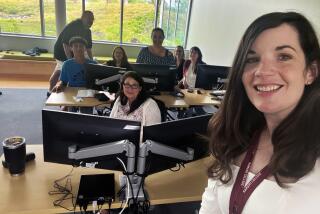A Skeletal Link to Jamestownâs Past
RICHMOND, Va. â Archeologists believe they may have found the skeleton of the man considered the main force behind the first permanent English settlement in America.
The graveâs placement inside the 17th century Jamestown fort, the estimate of when the grave was dug, and the ceremonial artifacts found with it suggest that it belongs to Capt. Bartholomew Gosnold, said William Kelso, archeology director of the Richmond-based Assn. for the Preservation of Virginia Antiquities.
âThis is just as significant as actually finding the fort,â Kelso said Tuesday.
The association, which began excavating the fort area in 1994, is arranging DNA tests to compare the remains with Gosnoldâs descendants. Kelso described the skeleton as âremarkablyâ well-preserved.
A native of Suffolk, England, Gosnold pushed the English to send out another group of explorers and settlers after the disappearance of the Roanoke Colony, in what is now North Carolinaâs Outer Banks, sometime around 1587.
In 1602, he led an expedition to the Maine and Massachusetts coasts, where he discovered and named Cape Cod, for the fish found there, and Marthaâs Vineyard, for his infant daughter.
As commander of the Godspeed, he was second-in-command of the three-ship fleet that landed the 107 settlers at Jamestown in May 1607.
Capt. John Smith, credited with leading and ultimately saving the colony, described Gosnold as âthe prime mover behind the settlement.â
Gosnold died in August 1607, after three weeks of illness. About two-thirds of the settlers died that summer.
Kelso said that from 1607 to 1610 -- an approximate time frame for the grave -- four high-ranking settlers died, leading experts to several possible identities of the skeleton.
More to Read
Sign up for Essential California
The most important California stories and recommendations in your inbox every morning.
You may occasionally receive promotional content from the Los Angeles Times.









